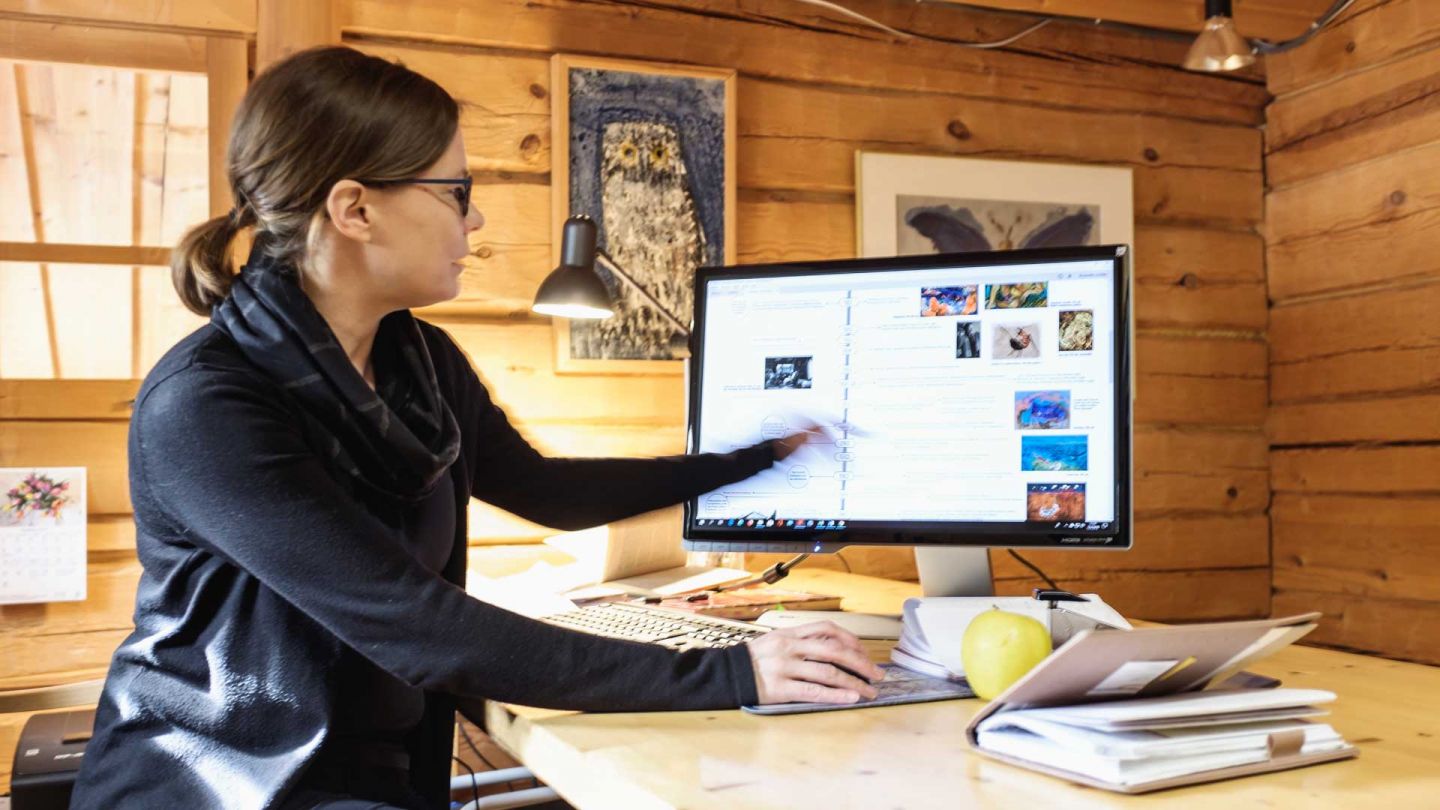Deep in the boreal forests of Lapland hides the birthplace of a celebrated artists by the name of Reidar Särestöniemi (1925–1981). His work, and the museum it is dedicated to, occupies his home, studio and gallery space built by the artist before his death. Located 30km South of Kittilä, the museum has face fire, funding and accessibility issues but now it thrives under the forward-thinking direction of Tuija Alariesto.
Tuija was invited to work as the Särestöniemi Museum’s director after 12 years of studies and 13 years of curating exhibitions at Arktikum and was quite honoured to receive the invitation.
– I remember when I was a child I visited the gallery. Inside, there is a swimming pool, and above it there was one particular piece of artwork that made a huge impact on me. I think it was the first time I had seen a piece of artwork tall then me. When I got the phone call, I knew immediately that I wanted to come here.
The Särestöniemi Museum is kept alive by her dedicated team and seasonal workers helping to maintain the upkeep of the museum. It is a unique place because it combines an ethnographical museum with an art museum. There is no other museum like this in the whole of Finland, specially one with an indoor swimming pool in its gallery space. For these reasons, there are some unique challenges that needed to be overcome.
Given its remote location and surroundings, the museum conveys how working in the arts can be both varied and rewarding. The hard work that Tuija has done will hopefully inspire others.
– This year I’ve had quite a lot of work to do, in the winter time, when I got home I didn’t have time to do anything but chop wood to heat my house. Compared to working at Arktikum, in the middle of a city, it’s totally different, as you can imagine. This is in the middle of the forest. It’s very beautiful. The atmosphere is very different. I enjoy being here.
The forests of Lapland are constantly trying to claim back the land. The ground around the buildings is constantly changing. The buildings are sinking, which can cause problems. If the wooden buildings are beginning rot the lowest logs may have to be replaced.
– We also have to look after the environment, we have to keep the forest at bay, its quite a lot of work, it’s always encroaching on us every year and needs cutting back.
But the work is not exclusive to outdoors. The age of the buildings also present issues. There have been a number of fires in the past. Tuija has since had a 650kg fire safety cabinet installed to protect the archives. Even the youngest building, the house Reidar built two years before he passed, presented its own fire risk.
– Reidar needed a lot of light. In the winter time, it’s very dark so he wanted to put up florescent tubes. The original lamps were still being used by the museum but we decided to change these recently because there was a huge danger of fire. Some of the lamps were burning red at the ends at about 800ºC. Now they are LED lights and are much safer.
Since the Museum also functions as a gallery for displaying Reidars artwork, Tuija wanted to pay special attention to the type of lighting being installed, respecting the artists obsession with specific pigments.
– Before we had lights from the 80’s which were very yellow, affecting the colours of the paintings. Now we have special museum lighting and the paintings are actually looking how they should. We chose 3000K because it’s similar to cold natural light. I think that’s how Reidar meant it to be.
Amongst the family home and studio of Reidar Särestöniemi, the site is also host to one of the most unique galleries in existence. The swimming pool in which Reidar used to swim each morning, is situated on the first floor of the gallery space, in which he would also exhibit and sell his work.
The fresh water in the pool actually helps in the winter time because the air can become very dry. It adds humidity to the air, protecting the artists materials from drying out and cracking. Tuija and her team curate and rotate the work on display in the gallery space as well as the many displays around the museum.
– We change the exhibition in the gallery once a year. We change the other exhibitions a few times a year. We also lend artwork all over Finland. There are 500 pieces of artwork in the museums collection. Reidar also loved collecting clothing. We have several items of clothing in our collections. Textiles are very hard to protect. We have to check if there is a moth or something similar. We also have to brush them to keep them clean. Especially fur. It’s a delicacy for small insects.
One of Tuija’s main goals is to give people a reason to return. At time of writing, she is working on a timeline of Reidars life history, documenting his life, his influences and travels around the world to give better insight to the visitors to the museum and something new to see.
– Most people who come here don’t even know that we change the exhibitions around, and that’s something that we want to change.
Thanks to the enthusiasm and dedication of Tuija and her team, they are helping to preserve and display one of Finland’s most inspiring stories of art and culture, collectively in the heart of Lapland.
– When I came here to work, I was told I could choose one piece of artwork to put above the swimming pool. I remembered the artwork that first inspired me as a child, so I had to chose that one, so it can inspire others.











